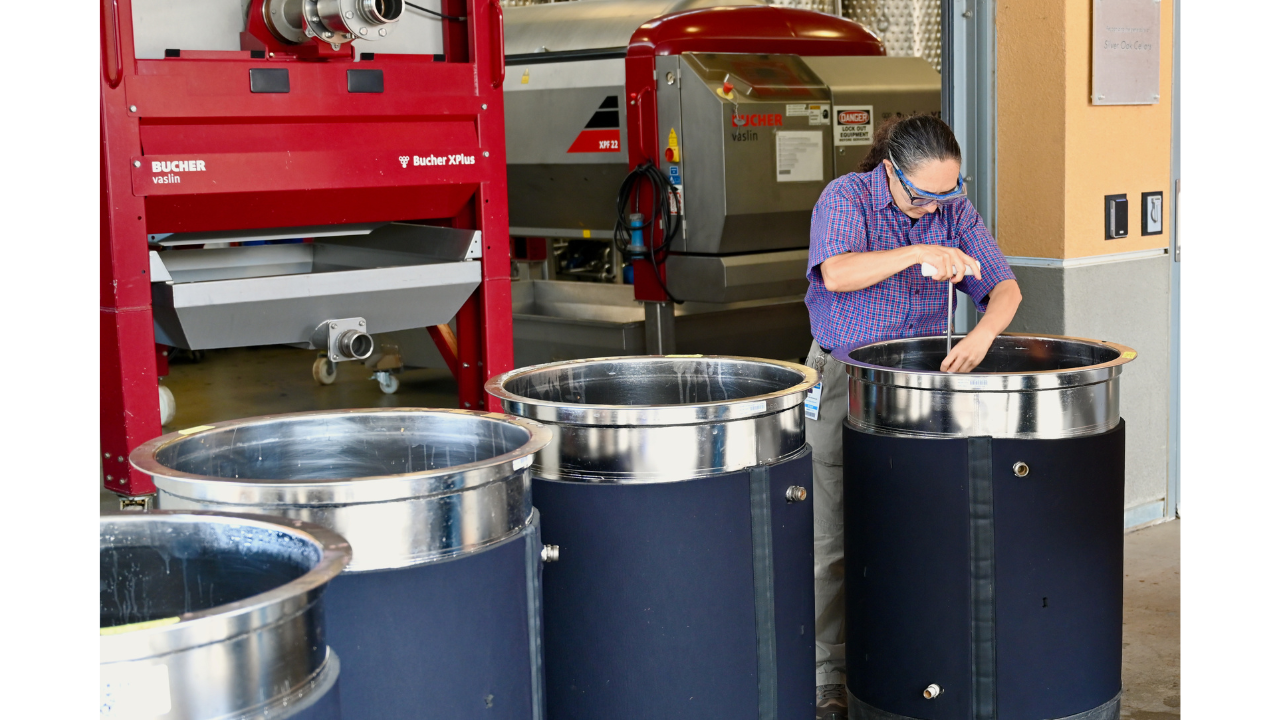
Thank you to everyone who participated in 2024’s harvest, from staff and faculty to all our students, researchers, and scholars. We appreciate all their hard work.
We had the great surprise of having Chancellor May and his lovely wife tour the winery in an episode of “That May Be the Chancellor”.
Two new staff members joined the winery team in late September. Chris Johnson, Enologist & Lab Manager, is an alum of our program and father to three kids. Chris indicated that “Overall, this harvest season was a memorable experience, defined by teamwork, learning, and the rewarding process of turning grapes into wine.”
James Nelson, who was a winery intern in 2019, recently completed his Ph.D., at UC Davis, and joined the team as sustainability engineer.
James summarized this harvest as follows:
“The Teaching and Research Winery processed 50.56 tons across 18 varieties. The first and last grape receivals were August 5th and October 17, respectively.”
With James on board, we are increasing our emphasis on our sustainability systems in place including rain capturing, wastewater, solar energy capturing, composting all our pomace, and continuing to capture and send the main wine lees to the UCD READ (Renewable Energy Anaerobic Digester).
James said:
“This was also the first harvest of operation for the department’s new clean-in-place (CIP) system, designed and installed by Placer Process Systems. The CIP was used in automated cleaning of the winery’s 14 2,000-liter fermentors and research is ongoing to evaluate cleaning chemistries, chemistry capture and reuse, and to extend the CIP to smaller fermentors and kegs. Rainwater that is captured off the winery buildings and processed with a reverse osmosis filter is also planned to supply the CIP. These new technologies advance the winery’s self-sustainable design, particularly in water usage (about 9 Vol. Water/Vol. Wine in 2024).
The department has recently launched a new dashboard to support teaching, research, and external communications. Data from the winery’s 166 fermentors, building infrastructure and sustainability metrics can be visualized. The dashboard is continuously being updated and can be found at https://winery.ucdavis.edu/dashboard.”
We started training our interns during spring quarter to improve their experience and knowledge, and this allowed them to become familiar with our facility and winery operations. Fermin Ramirez, who has been with the team for over 4 years, indicated, “Our team also celebrated the certification of 11 interns in forklift training, ensuring safety and readiness for operational demands.”
Another milestone is the approval of our permit to sell wine under the entity Hilgard631. This will allow us to sell some of the wines that students produce. Currently, the process is in the last stage of completing all the regulation requirements.
Like a symphonic orchestra, harvest is always gratifying and includes the participation of all our students, researchers, scholars, staff, and faculty, who bring harmony to our facility. We look forward to an excellent 2025 season.
